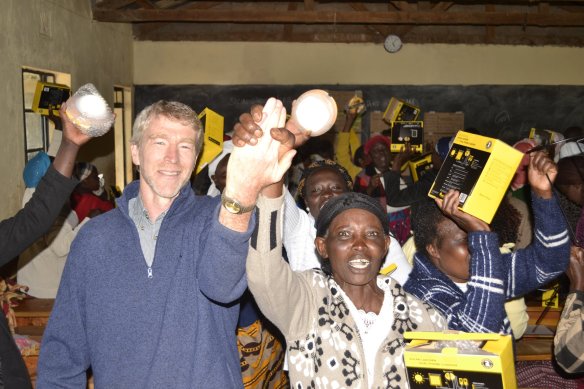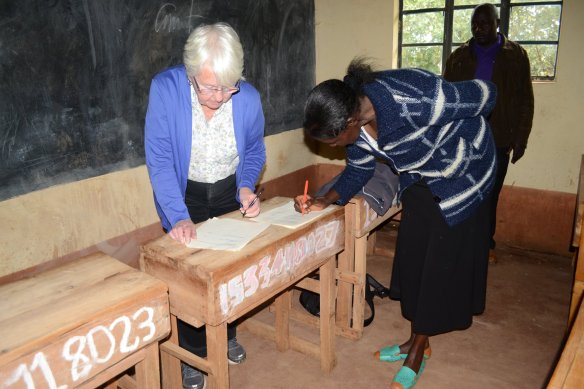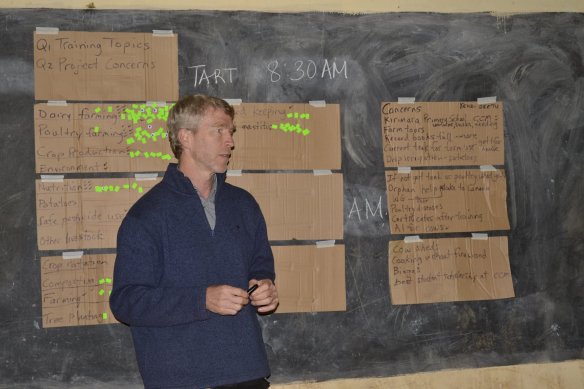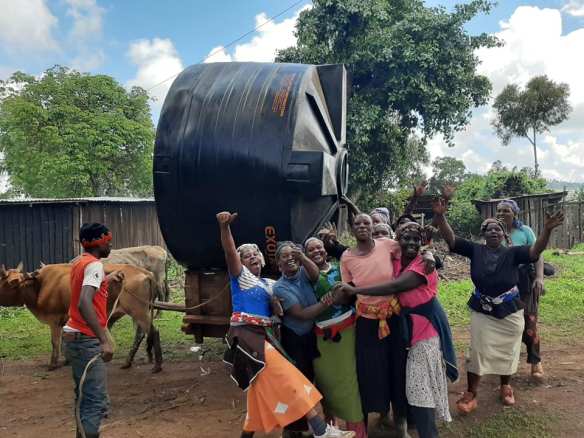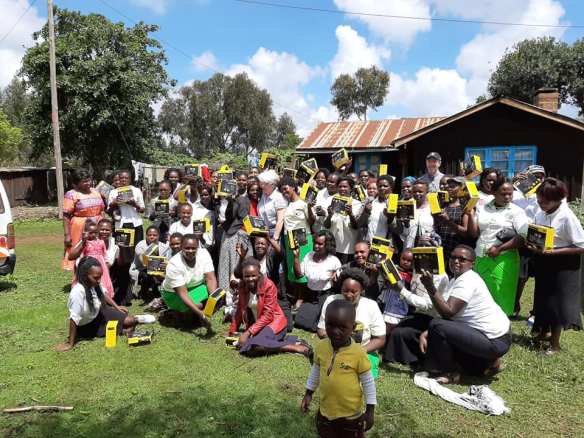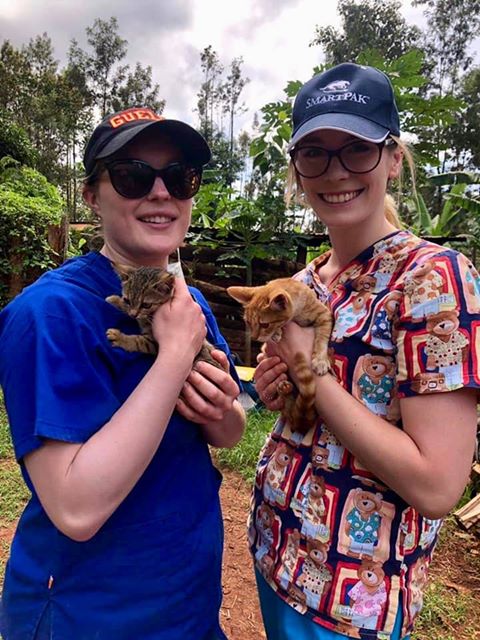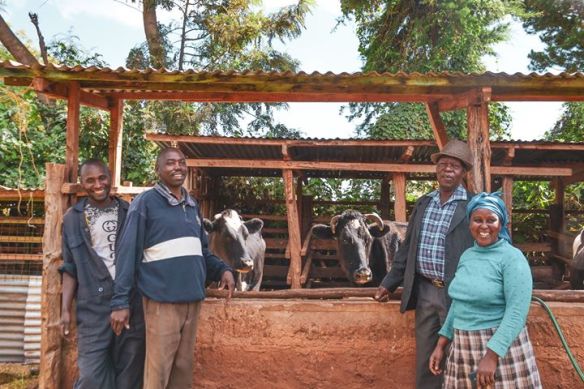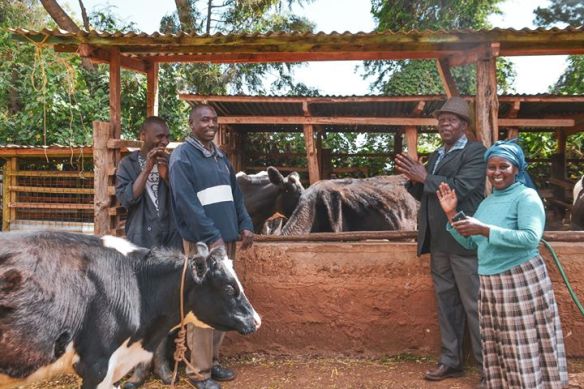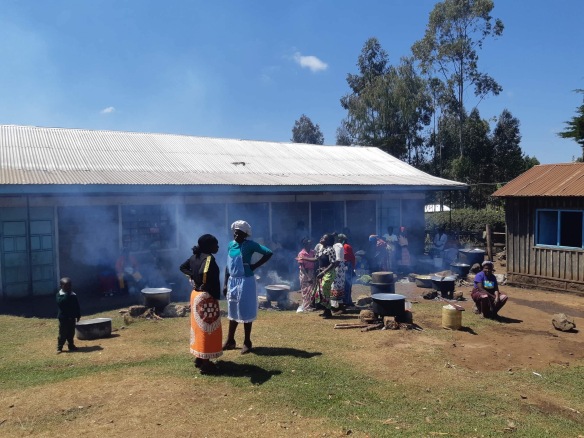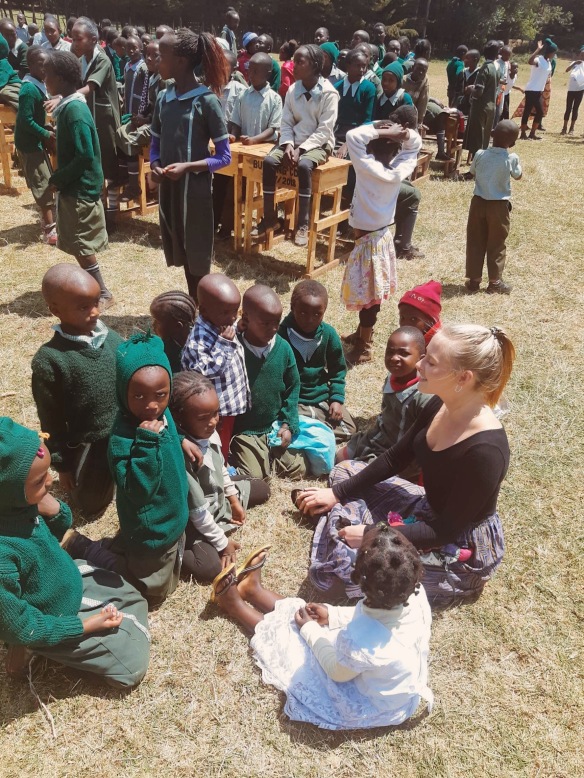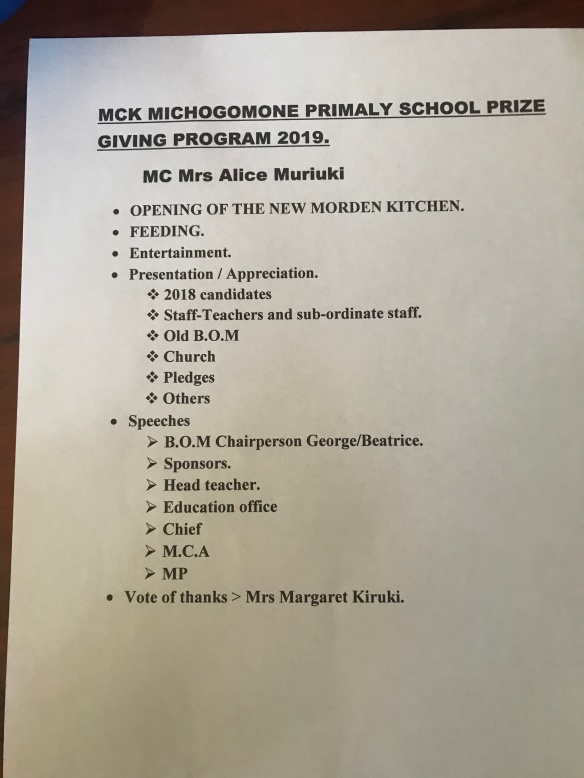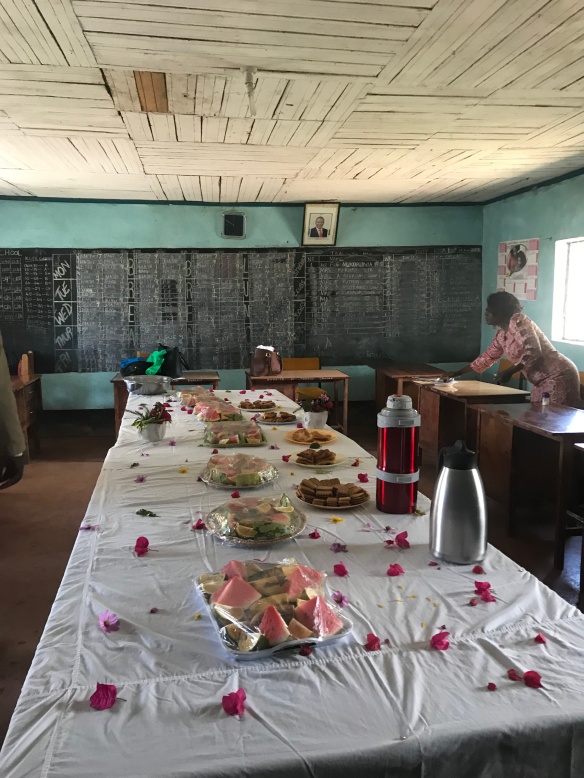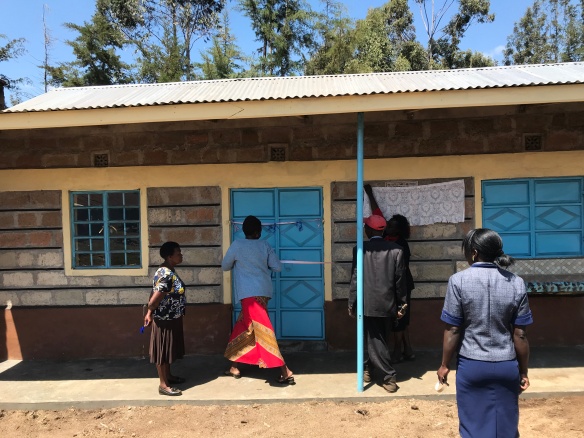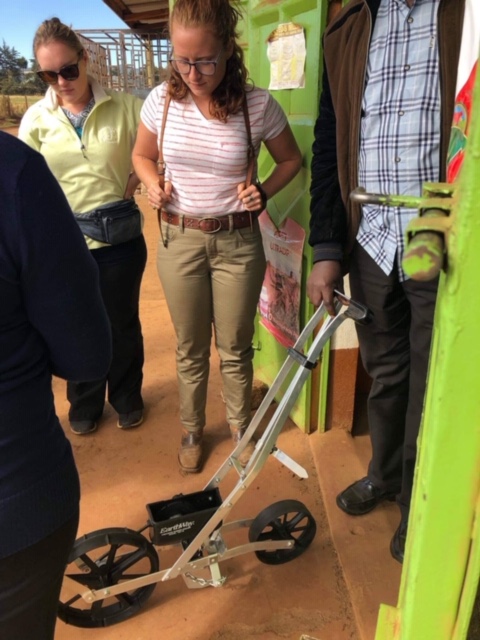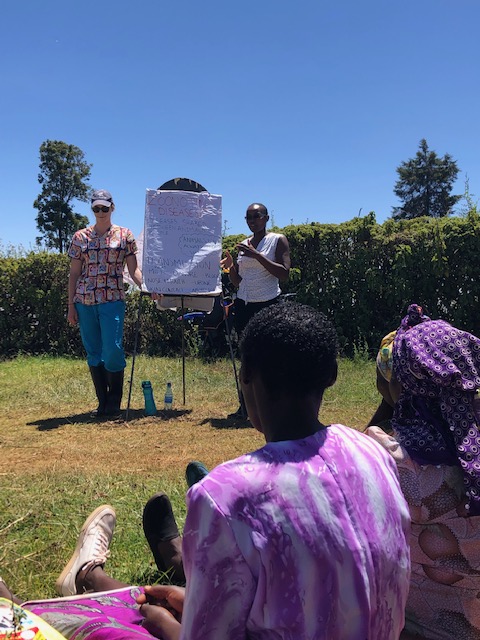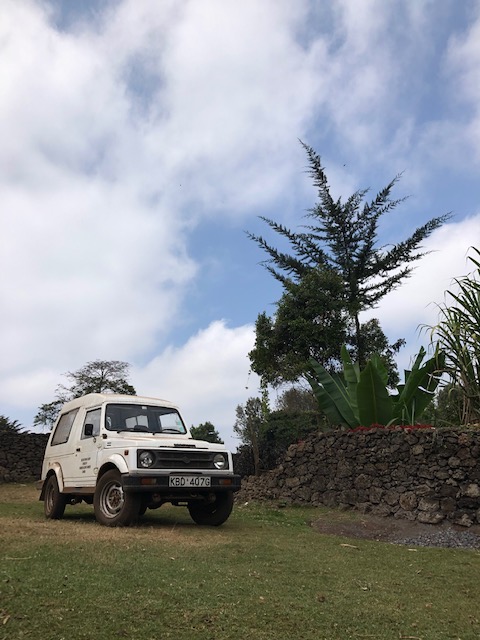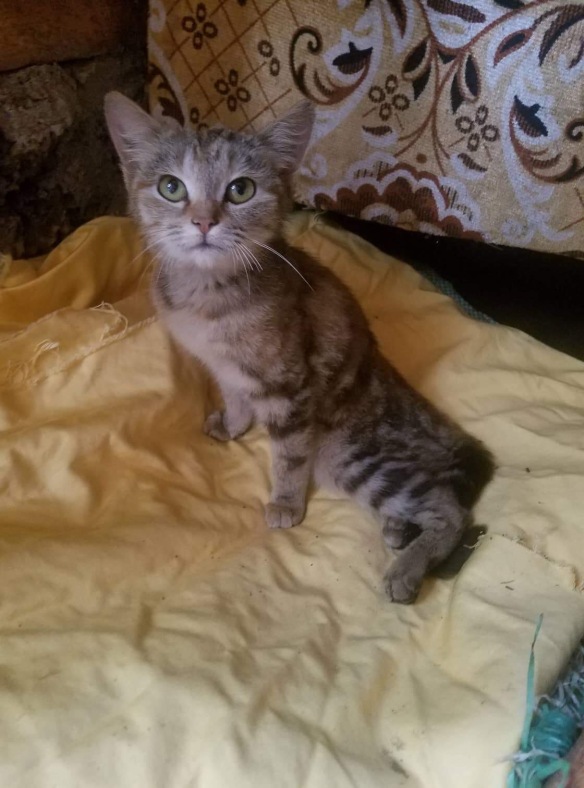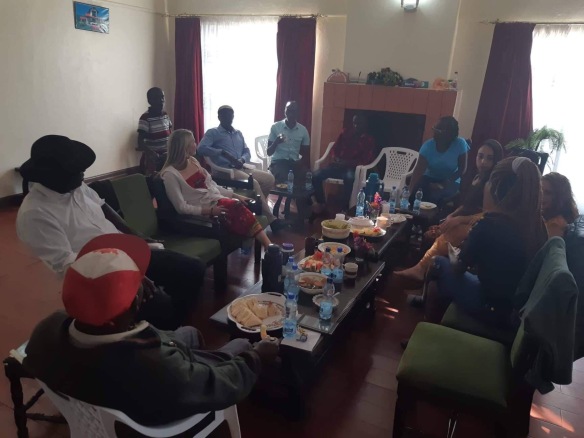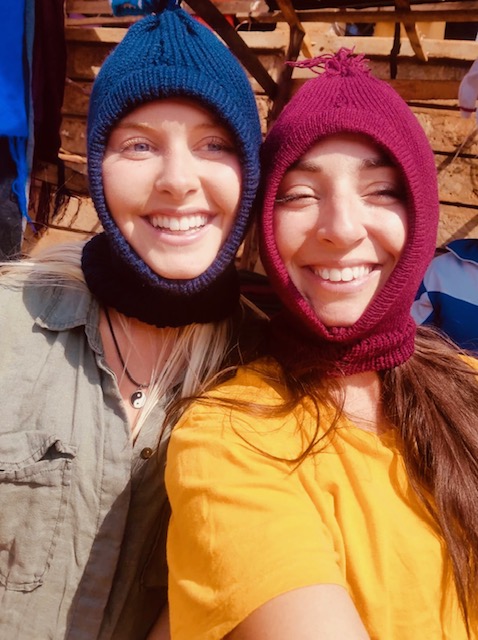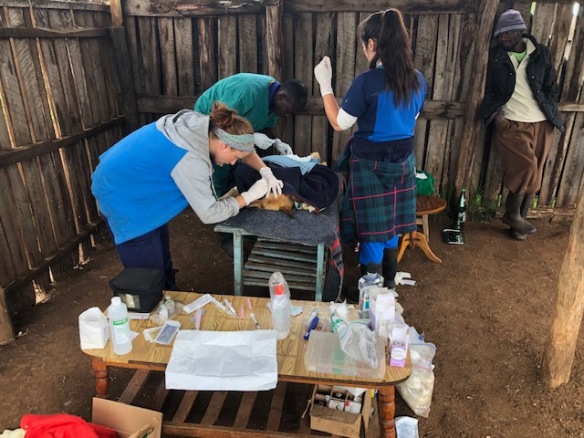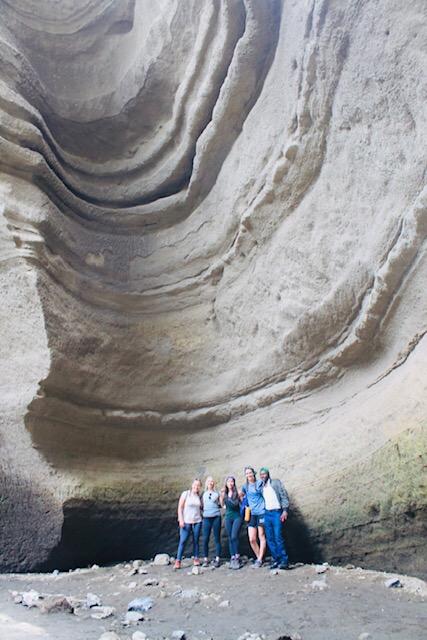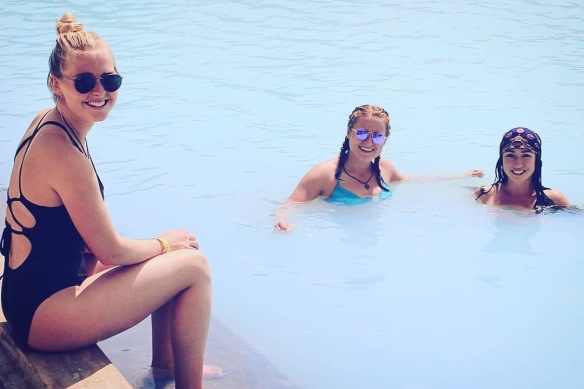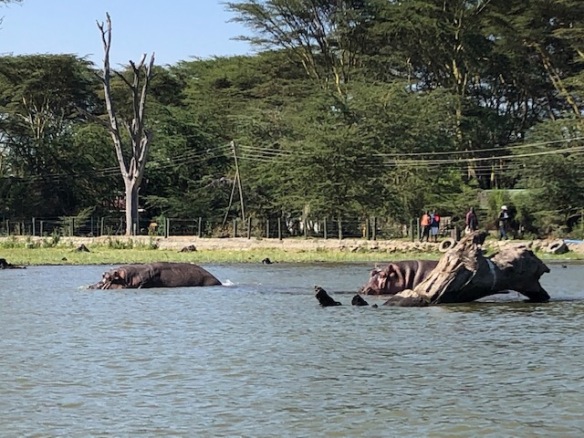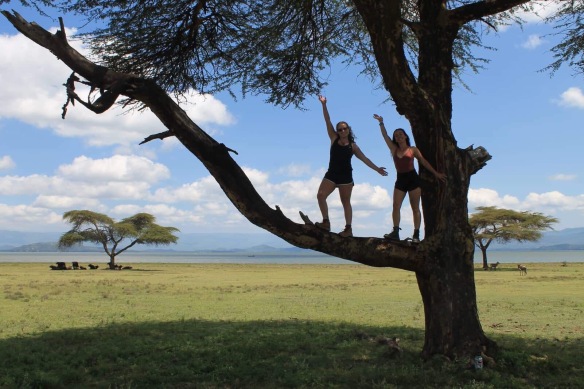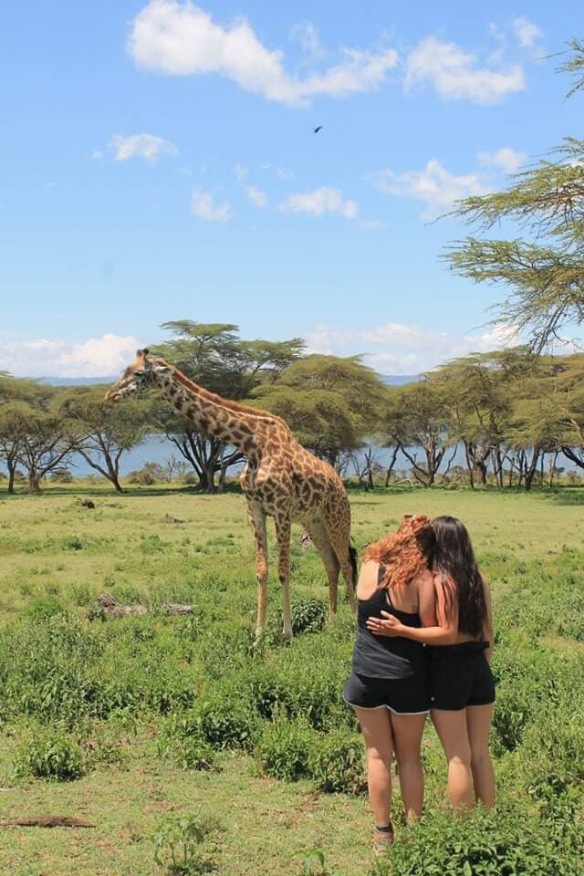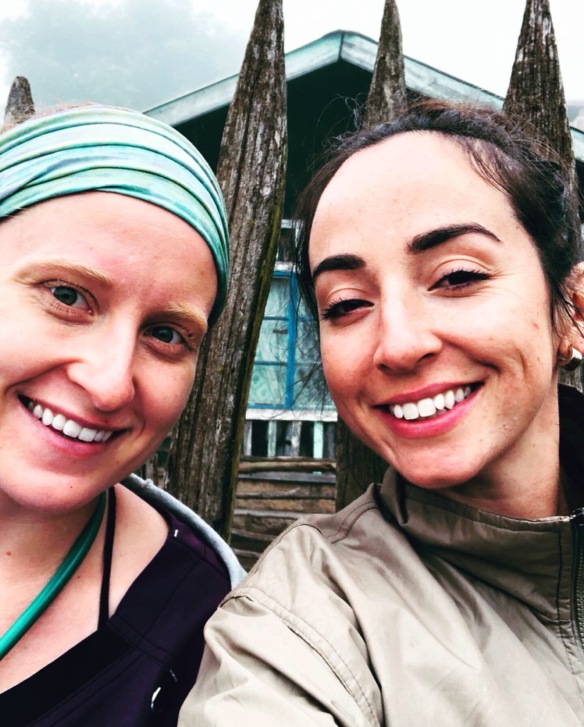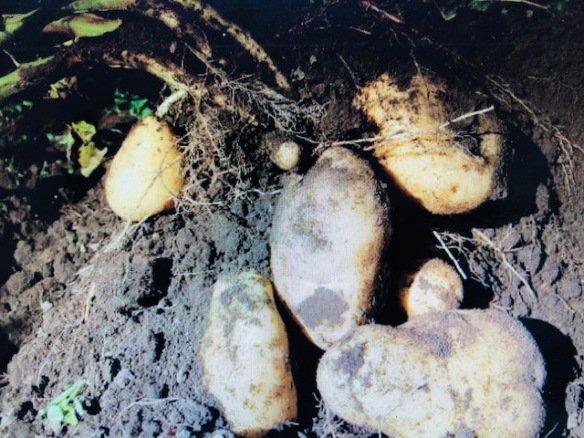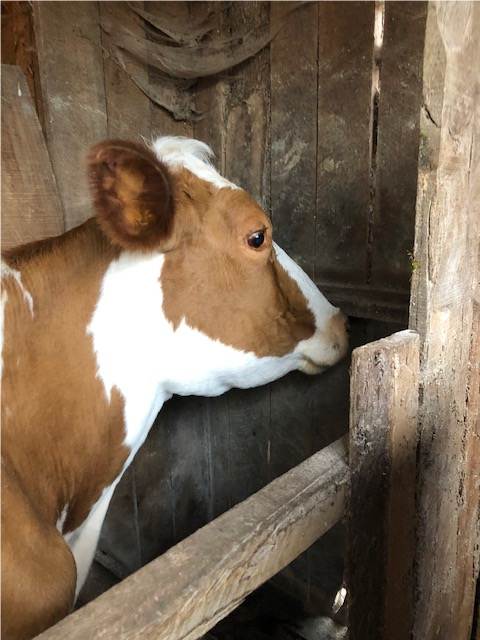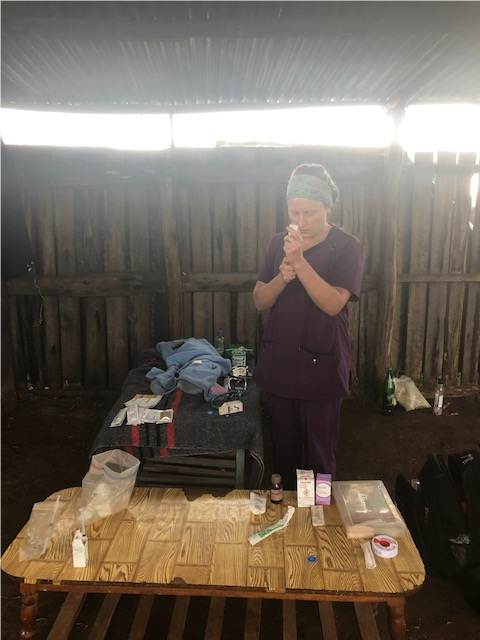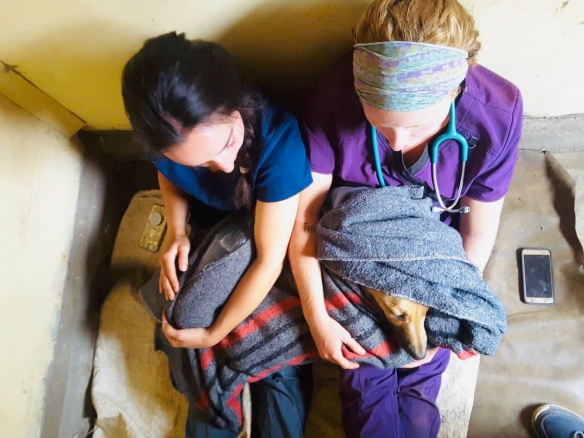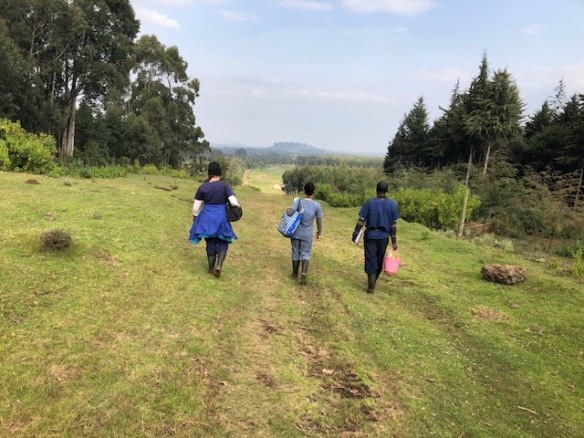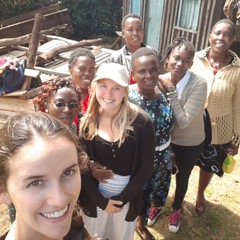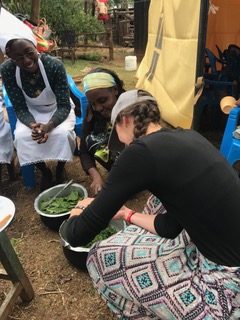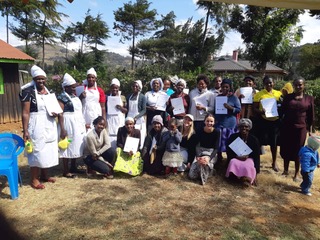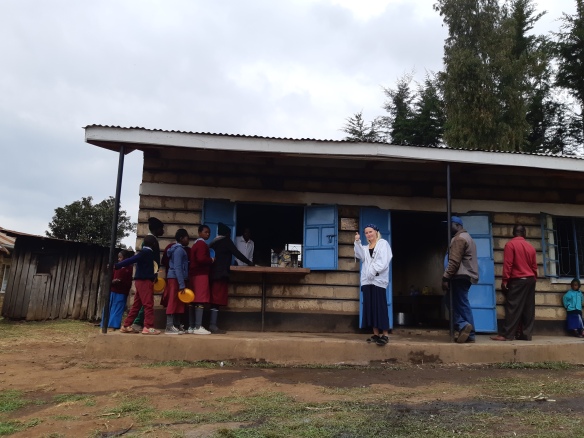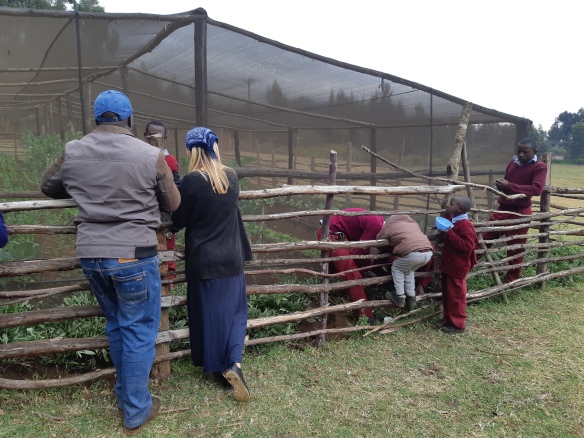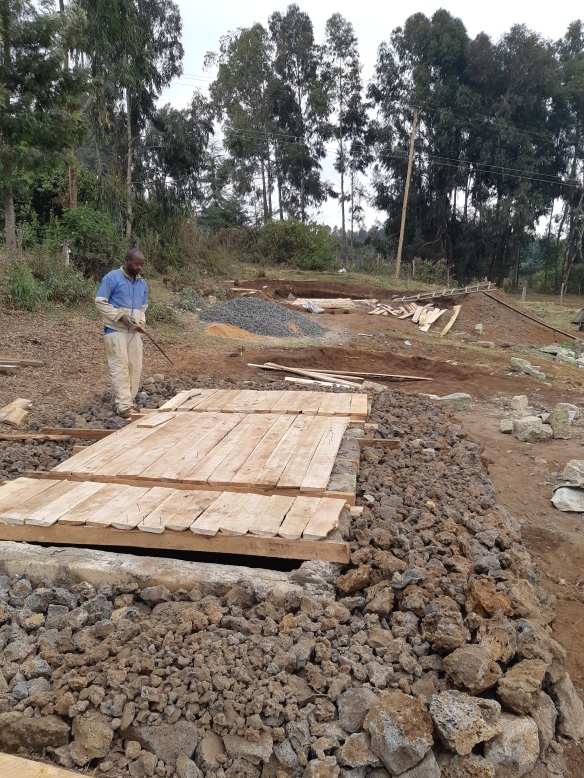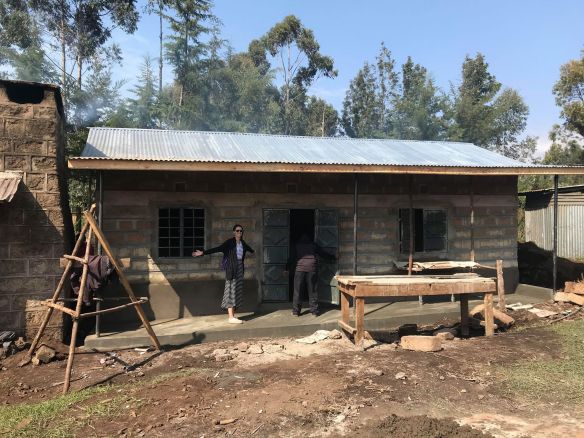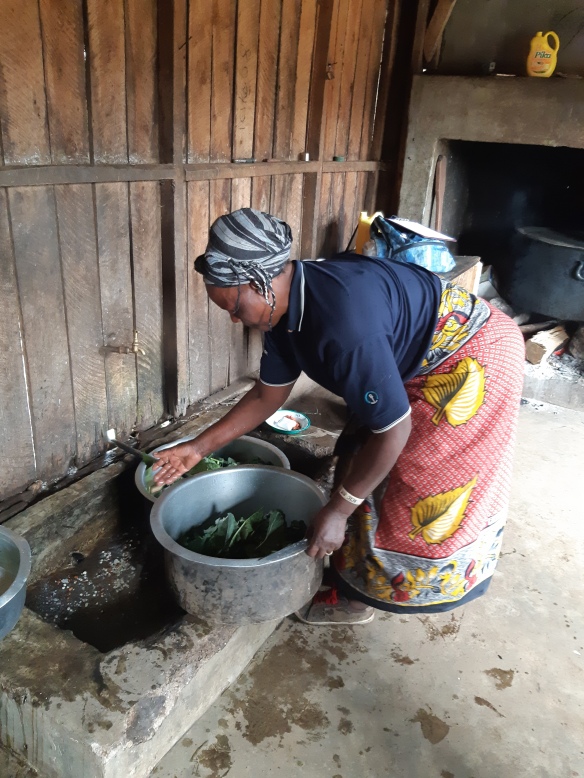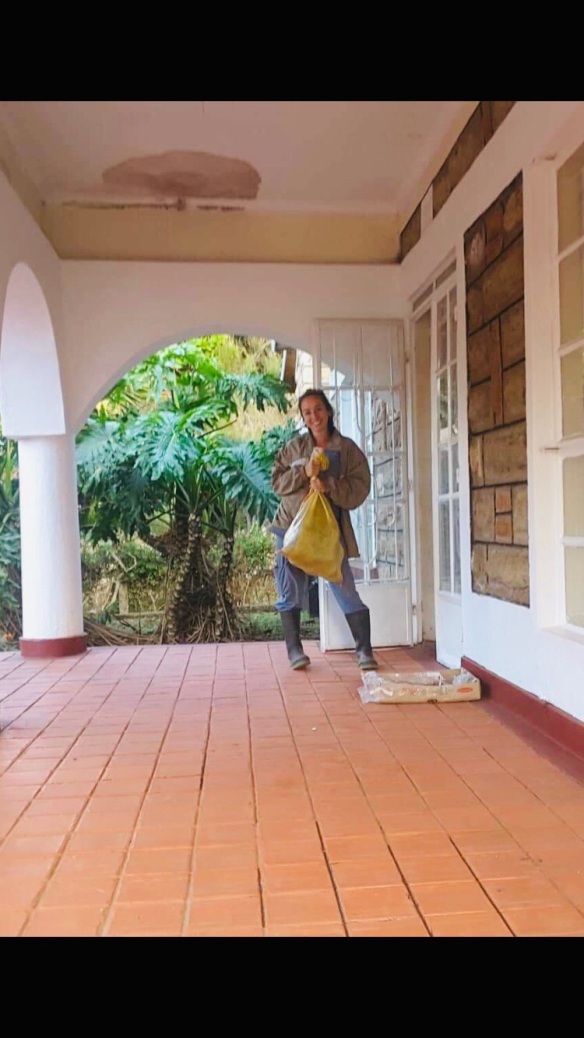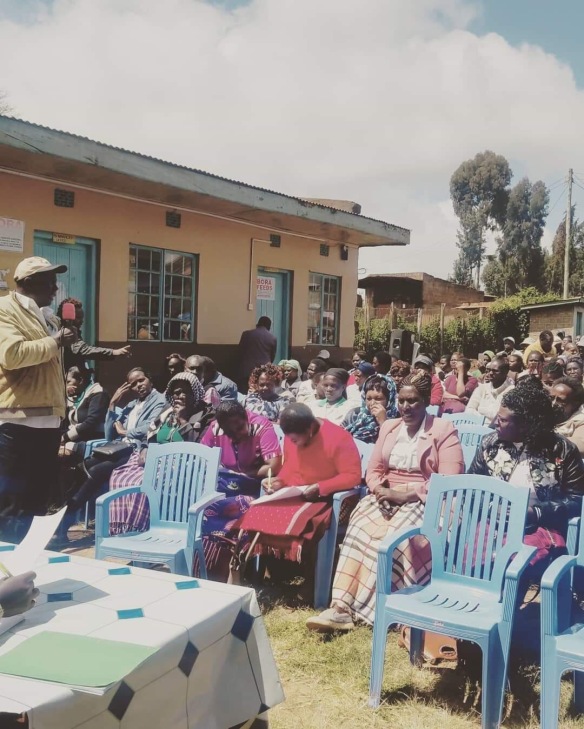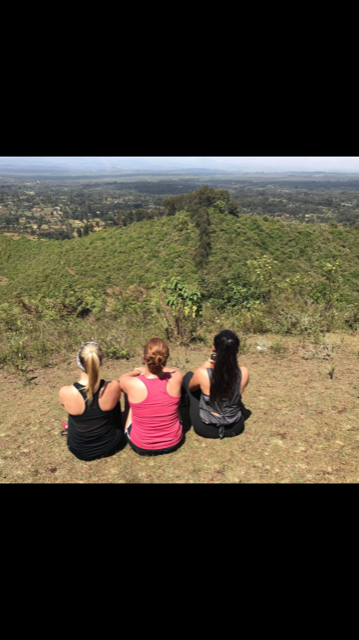
Standard 6 at Rugetene featuring our translator Dorcus
by Haley MacKenzie, QE Scholar and UPEI nutrition student
June 25, 2019
We have finished up another round of home interviews and have left our schedule blank this week because it is Julie’s last week with us, and we want to help with gathering some background information for her master’s project which she will start in September at UPEI, working with Prof Jennifer Taylor. Julia and I are collecting baseline data from the schools via meal assessments this summer so that Julie can carry out a nutrition education intervention on standard (grade) 6 pupils next May-June.
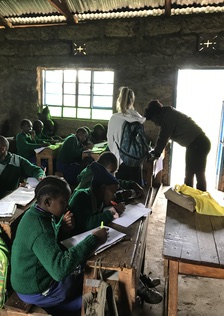
Julia and I walking around the class helping to answer student’s questions
We visited two primary schools to obtain feedback from students and teachers on whether our current Food Frequency Questionnaire (FFQ) would be appropriate for standard (grade) 6 students. In this blog, I will focus on the comments and perspective of the students. Julie had prepared questions about whether the students could understand what the questionnaire was trying to measure, which foods were difficult to record, whether there was foods on the list that were not eaten in their community, and whether there were foods missing from the list that were eaten in their community. Julia and I looked forward to joining her because we have been using the same questionnaire in our home interviews and the feedback would valuable in determining the best way to conduct the interviews so that is easily understood.
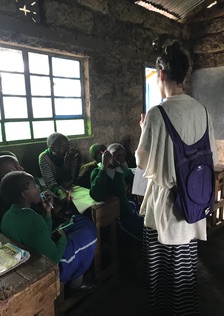
Julia answering the student’s questions about Canada
On Monday, the nutrition team and Dorcus visited the standard 6 students at Rugetene Primary. Julie handed out the FFQ, explained how to fill it out, and allowed the students to complete it on their own. Immediately, there was a bit of confusion because the questionnaire was written in English followed by a Kimeru (the local language) translation. We realized that the students understood the English better than the Kimeru, since it was written rather than spoken.
Our first lesson was that the questionnaire should be written in English followed by a Kiswahili translation to avoid confusion. This is because children in grade 6 are taught English and Kiswahili (written and spoken) and are encouraged strongly to use one of these languages rather than the local language. We were lucky to have Dorcus and Julie to help in translating the foods for us, as many students could not understand Julia and I.
At first, I thought it was because they could not understand English well, but when Julie began repeating what I’d said to the students in English, I realized that they simply could not understand my Canadian (PEI?) accent.
For example, a few students asked me what was meant by ‘other vegetables’ on the questionnaire. I tried to ask about whether they could think of any other vitamins that weren’t included on the list—as their curriculum groups all vegetables into a ‘vitamins’ category—but they could not understand what I was trying to say. In one last attempt to communicate with them without a translator, I repeated myself, but this time pronouncing it ‘veet-a-mins’ and was happy to see the children nod in understanding.
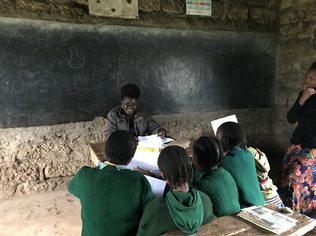
Next, we asked the teacher to choose five boys and five girls that we could further interview. Julie and I took the girls to an empty classroom while Julia and Dorcus took the boys to a separate empty classroom. We asked them about thirty questions about the questionnaire, general knowledge and practices, attitudes around healthy eating, and sanitation and food safety. We got some very interesting answers and learned a lot about the girls’ ideas about food as well as the general food traditions in the community.
We realized that some children believed that we were visiting to gauge whether their families were rich and/or had a stable life, rather than just collecting data about food consumption and practices.
We learned that, although the mother is most likely to be preparing foods at home, both girls and boys at this age were familiar were cooking rice, ugali, greens, and tea and did so when their mother is not around. Both also agreed that boys eat more food and must do so because they do the hard jobs and thus need more energy for strength.
We were surprised to learn that the majority of students do not wash their hands at school. They explained that there is an issue with the availability of water and that if they were to handwash before eating then they would lose their spot in the lineup for lunch. However, both boys and girls agreed that they wash their hands often at home. This is a challenge for all schools and it is an important priority for future work.
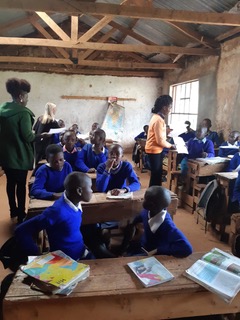
Julie, Dorcus, and I collecting the FFQ from standard 6 children at Murinya
On Tuesday, the nutrition team, Dorcus, and Mwenda visited Murinya Primary to interview teachers and standard 6 students, give the deputy to head teacher our feedback report, and drop off some gifts. Julia, Mwenda, and I had visited about a week prior to complete a school assessment on their kitchen and the staff were extremely friendly and welcoming.
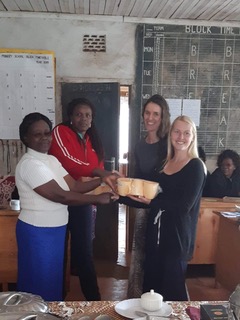
Julia & I giving the kitchen staff at Murinya new cups for uji
Murinya is located next to what they call the ‘slums’—a very poor area where most students live. We had to keep this in mind because the parents could not afford the school fees or donate maize, beans, or veggies from their shambas (farms) to the school kitchen. Consequently, they did not add many vegetables to their githeri and there was not much that we could recommend that they’d be able to implement without parental support/money.
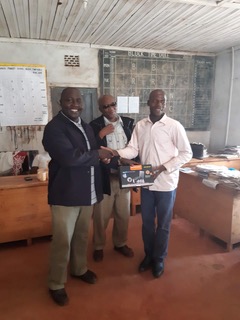
Mwenda giving the cook his new solar light bulb system
However, we did talk to their amazing cook, Joseph, about soaking the maize and beans. He told us that he comes in around three ‘o’clock each morning to begin cooking the maize and beans for the day, using a torch to guide him in the dark! When we returned a week later, we were ecstatic to hear that he’s been soaking ever since, that he comes much later in the morning now, and that the students are happy. Julia and I gifted him with eighteen new cups for the nursery children and Mwenda brought him a 3-bulb solar lamp for the kitchen. He was pretty happy, as you can see by the pictures.
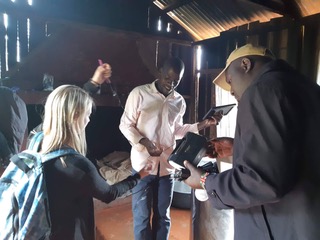
Mwenda and I helping Joseph (Murinya’s cook) set up the lights
We followed the same schedule with Murinya as we did with Rugetene; Julie gave the standard 6 class an opportunity to complete the FFQ, then we split up into two groups. This time, Julie and I took the boys while Dorcus and Julia took the girls.
These groups repeated much of what we heard the previous day at Rugetene, e.g. recommending Kiswahili for the questionnaire, mother prepares the meals, and boys eat more food than girls. As many of these children lived in the poor area, they did express that lack of money and water were barriers to their health. We learned that they rarely ever washed their hands due to a shortage of water and they did not believe that the children in their community ate healthy because they eat the same type of foods every day. The children also told us that chicken and goat is very rare in their community, that there are beliefs that a breed of pumpkin is only to be eaten by cows, and that they don’t know the difference between cow and sheep meat.

Julia and Dorcus getting a selfie with the Murinya girls they interviewed
Julie and I finished interviewing the boys and decided to peek into the classrooms as we waited for Julia and Dorcus. We noticed that none of the classrooms had teachers as they were busy in a staff meeting, so we took the opportunity to talk to the class.
This school had not yet received any FHF support, so they were not familiar with mzungus and were quite shy around me. Julie and I entered a standard 7 classroom and introduced ourselves. A handful of the students asked Julie general questions about me and Canada and then one asked if I would greet them. I happily walked around the class and greeted each student with a handshake, pausing at a few that didn’t want to let go.
On the other hand, one student hopped up and ran to other side of the room when I reached him! Julie asked how they would feel if someone were to run from them and explained that there is no difference between me and them nor anything to be afraid of. I told the students that I don’t bite and although many giggled, only a couple would look me in the eye.
The last week has been very eventful and different from our usual schedule, but we have all learned so much about the students and the habits of the community. It has also been extremely rewarding to be able to gift a well-deserving school and see the difference that we are making in the children’s and teacher’s lives. Tomorrow we leave for our break week and we will return with a different perspective after all that we’ve learned this week about the children’s ideas around food, health, and sanitation.
